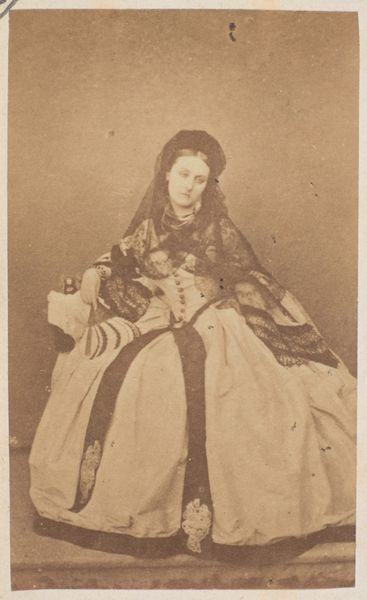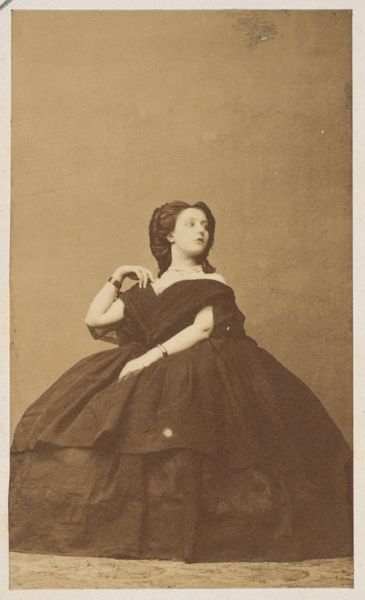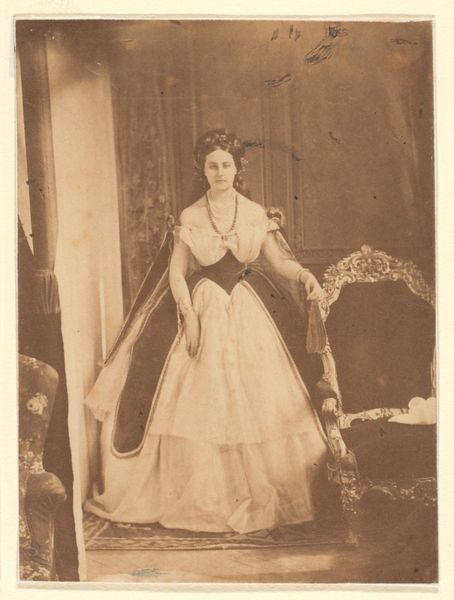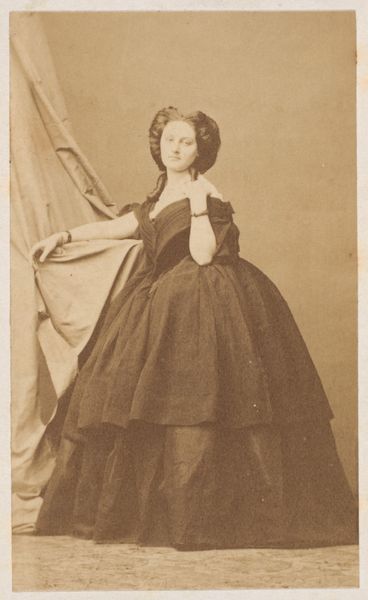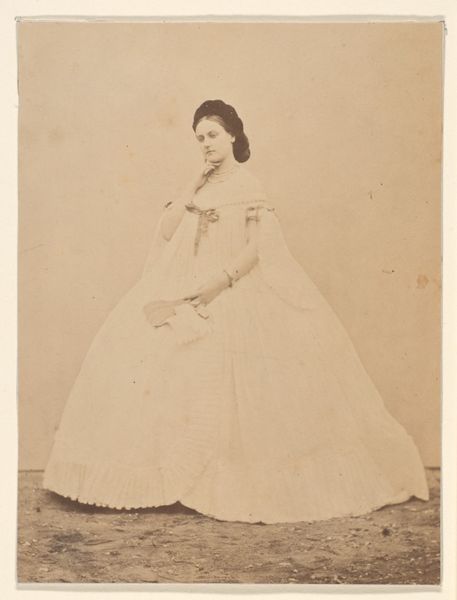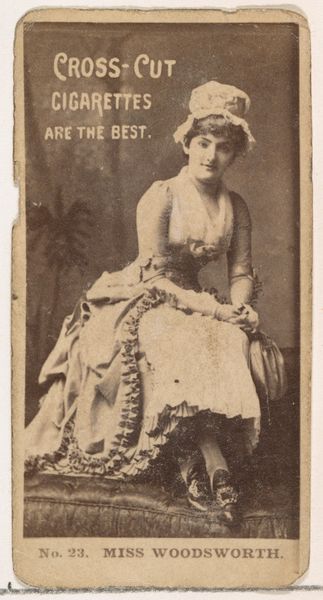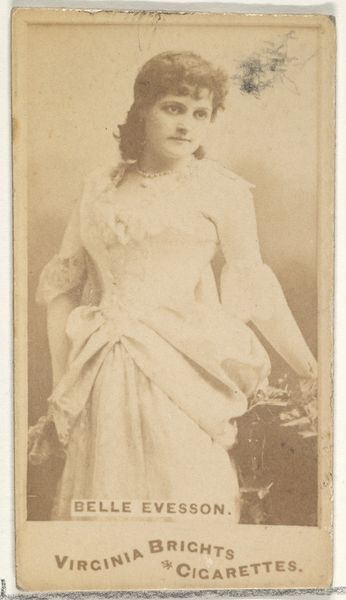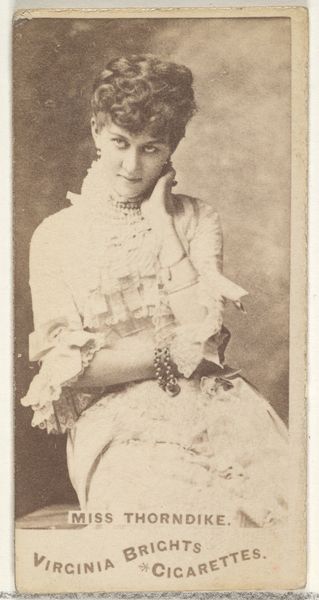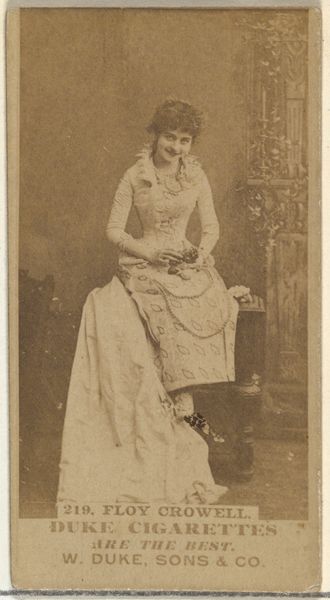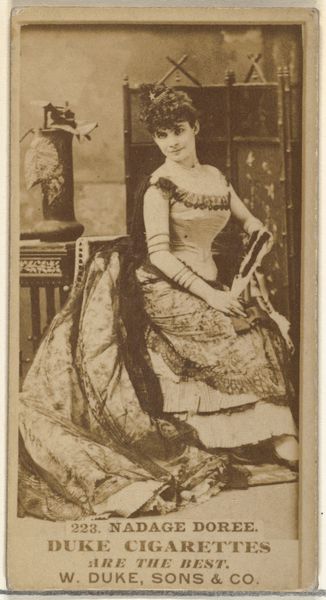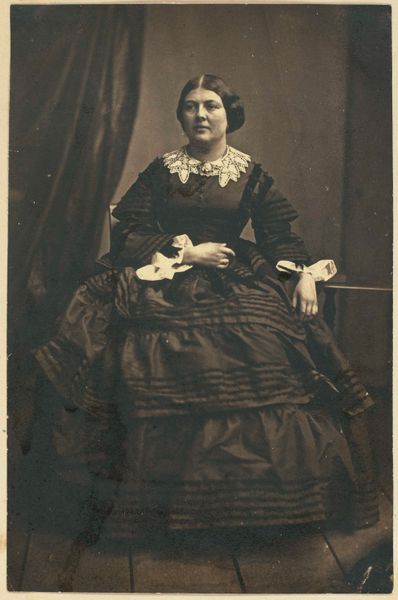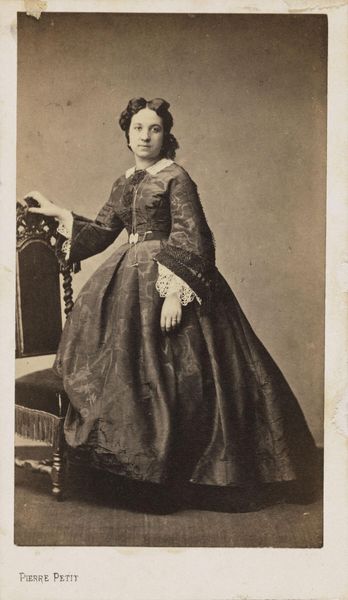
daguerreotype, photography
#
portrait
#
daguerreotype
#
photography
#
romanticism
Copyright: Public Domain
Curator: This is a fascinating early photograph, a daguerreotype by Hill and Adamson, dating from 1843 to 1847. It portrays Lady Elizabeth Eastlake. The Metropolitan Museum houses this specific print, I believe. Editor: Ah, she seems captured in a pensive mood. There's something quite melancholic, almost haunting about its sepia tones. Is she gazing out a window, or lost in thought? Curator: The technical limitations of daguerreotypes—those long exposure times—certainly influenced the sitters' demeanor. Think about what went into staging these elaborate portraits with fragile equipment that shaped our relationship with representing power and domestic life. This image shows her within domestic space which speaks to her class, social identity, and perhaps self identity as well. Editor: Precisely. And thisshawl that is laid over her, so beautiful and intricately woven - what does this tell us? It has an understated glamour. A story of travel, wealth, and material access all at once. I wonder where it was crafted. Curator: We know Elizabeth Eastlake was a writer and art historian herself, so her awareness of presentation and the visual language of status would have been highly attuned. Notice her dress is full and ornate which must speak to the level of time needed to both produce and care for it. Early photography democratized portraiture, but materials here also reinforce distinctions through craftmanship and style. The textures that the Hill and Adamson capture here offer clues for decoding nineteenth century social codes. Editor: Her gaze is both elegant and strong as her social context would predict; but those hands holding onto that small, pale object—flowers perhaps, or a handkerchief? There's an unexpected delicacy and vulnerability in their positioning. A silent echo amidst all this controlled wealth and craft. What do you take away, knowing that her husband was president of the Royal Academy? Curator: Well, thinking about her marriage, then we see not just gender conventions being reinforced, but a complex web of power and influence. So thinking about who gets pictured and how—it shows both limitations of early photography as a technology, and possibilities of the medium to negotiate these shifting grounds between public, private and everything in between. Editor: It seems like we can decode how early portrait photography can point back to not just class relations, but how they can become moments of personal truth telling through visual materials as well.
Comments
No comments
Be the first to comment and join the conversation on the ultimate creative platform.
